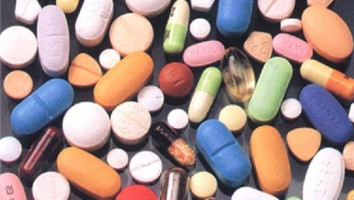
Results from the NRG Oncology Phase II NRG-GOG-0279 clinical study indicate that women with locally advanced squamous cell carcinoma of the vulva who received gemcitabine concurrently with cisplatin and intensity-modulated radiation therapy (IMRT) exhibited an increased rate of pathologic complete responses (pCR).
This is also the first clinical trial to standardise IMRT. These findings were presented during the Plenary Session at the Society of Gynecologic Oncology (SGO) 2023 Annual Meeting on Women’s Cancer.
“Women with locally advanced vulvar cancer are currently treated with standard chemoradiation, which results in a high number of patients experiencing locoregional recurrence in their lifetime.
NRG-GOG-0279 was designed to determine whether the addition of gemcitabine to cisplatin and higher doses of radiation administered with IMRT, could improve the efficacy of the treatment while avoiding added toxicity for these patients,” stated Neil S. Horowitz, MD, of the Brigham and Women’s Hospital and Harvard Medical School and the lead author of the NRG-GOG-0279 abstract.
NRG-GOG-0279 analysed 52 eligible and treated women with locally advanced vulvar cancer (LAVC) that was not amendable to surgery. Patients received 64 Gy to the vulva and 50 or 64 Gy to the groins and low pelvis for positive nodes and unresectable nodes respectively.
Cisplatin (40mg/m2) and gemcitabine (50mg/m2) were administered weekly throughout IMRT. The response was then assessed at 6 to 8 weeks following treatment.
NRG-GOG-0279 assessed pCR as the primary endpoint, with a main goal of improving pCR outcomes by 20% or more when compared to the pCR rate of 50% reported for the GOG-0205 trial.
If successful, this would warrant further investigation into this study approach. The trial also evaluated complete clinical response (cCR), PFS, overall survival (OS), and adverse events as secondary endpoints.
Patients on the trial received a median of six cycles of gemcitabine and cisplatin. Of the 44 patients who had radiation therapy compliance reviewed 33 (75%) had high quality IMRT and 11 patients (25%) had minor deviations. Of the 44 evaluable patients, 38 patients achieved pCR (73.1%, 90% CI 61.2-83.0%) and 37 had cCR (71.2%, 90%CI 59.1-81.3%).
At the median follow-up of 51 months, PFS at 12 months was 74% (90%CI 62.2-82.7%) and OS at 24 months was 69.6% (90%CI 57.4 – 79%). There was one grade 5 toxicity, 25 patients experienced grade 3 adverse events and 18 patients experienced grade 4 adverse events. Common grade 3 and 4 adverse events included radiation dermatitis, leukopenia, thrombocytopenia, and electrolyte abnormalities.
“While this approach improved survival and response outcomes for this population, it is important to note that future research is needed to find the ideal treatment regimen for this patient population to improve clinical outcomes further while minimising toxicity,” Dr. Horowitz added.
This project was supported by grants U10CA180868 (NRG Oncology Operations) and U10CA180822 (NRG Oncology SDMC) from the National Cancer Institute (NCI).
Source: NRG Oncology
We are an independent charity and are not backed by a large company or society. We raise every penny ourselves to improve the standards of cancer care through education. You can help us continue our work to address inequalities in cancer care by making a donation.
Any donation, however small, contributes directly towards the costs of creating and sharing free oncology education.
Together we can get better outcomes for patients by tackling global inequalities in access to the results of cancer research.
Thank you for your support.